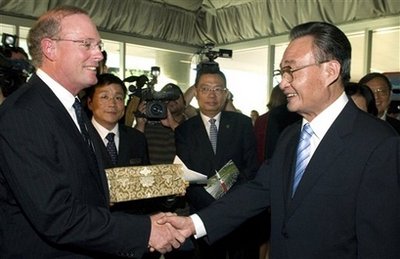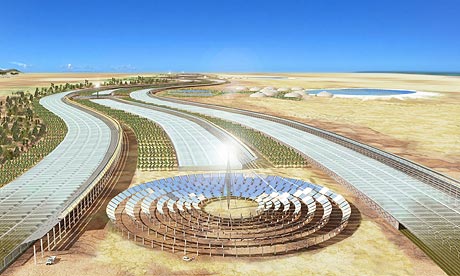
Spencer Ahrens, a 23-year-old mechanical engineer, was on MIT’s campus last week, holding a wooden plank, surrounded by onlookers.
Slowly, he turned that wooden plank before a series of mirrors that had been placed inside an aluminum frame, until the wood caught fire.
That was quite a moment, recalled Matthew Ritter, one of the onlookers.
“Let’s just say it was a small combustion for wood materials, but a giant explosion of solar energy,” he said.
Ahrens, Ritter and the other people who helped create the solar-powered dish that harnessed the sunlight that eventually burned the wood say they’ve just created the world’s most cost-efficient solar power system.
They also say these dishes may revolutionize global energy production.
“You can stick these things wherever there is a piece of sunlight, and power a home or an industrial plant,” said Ahrens, who just received his master’s degree from MIT.
Since January, he’s been working with Ritter, an Olin College student; Micah Sze, a recent graduate of MIT’s Sloan School of Management; University of California-Berkeley graduate and Broad Institute engineer Eva Markiewicz and MIT materials science student Anna Bershteyn.
Together, they built a 12-foot wide solar panel by piecing together lightweight aluminum tubes to make the frame. Inside, they arranged a series of mirrors and then attached a water-filled coil at the bottom of the frame.
When the frame is properly positioned, the mirrors will direct concentrated sunlight toward the coil.
As the water heats up, it is converted to steam, and that steam, the creators say, can be used to generate electricity to heat and cool homes and power machines.
They now say its design is so simple, it can be built and placed just about anywhere the sun shines.
“We made it by hand and transported the parts by car or by bike,” Ritter said.
The crew spent about $5,000 to build the dish, and according to MIT Sloan School of Management lecturer David Pelly, it is the cheapest way he’s seen to harness that much sun power.
“I’ve looked for years at a variety of solar approaches, and this is the cheapest I’ve seen,” he said.
Ahrens, Ritter and the others are now packing up and moving to California, where they plan to mass-produce the dishes, probably for less than it cost to build the first one.
Their new company is called RawSolar, and Ahrens said its possibilities are endless.
“The energy crisis affects so much of what we do,” Ahrens said. “It’s driving food prices and water problems and airline fares, and we are trying to work through these things in an environmentally and economically sustainable way.”
After all, he said, “Sunlight is free.”
Source: Boston Herald





